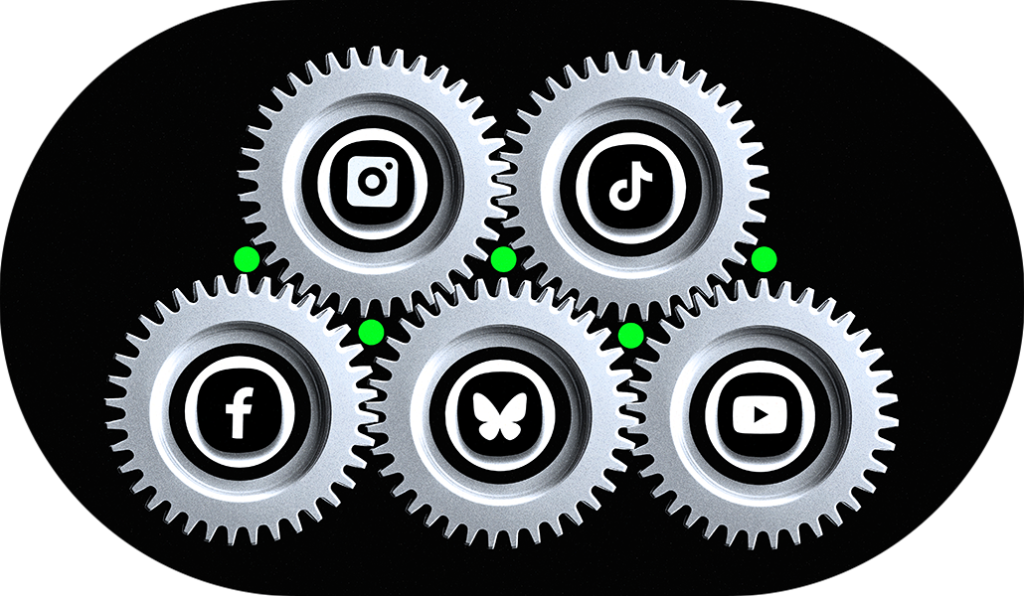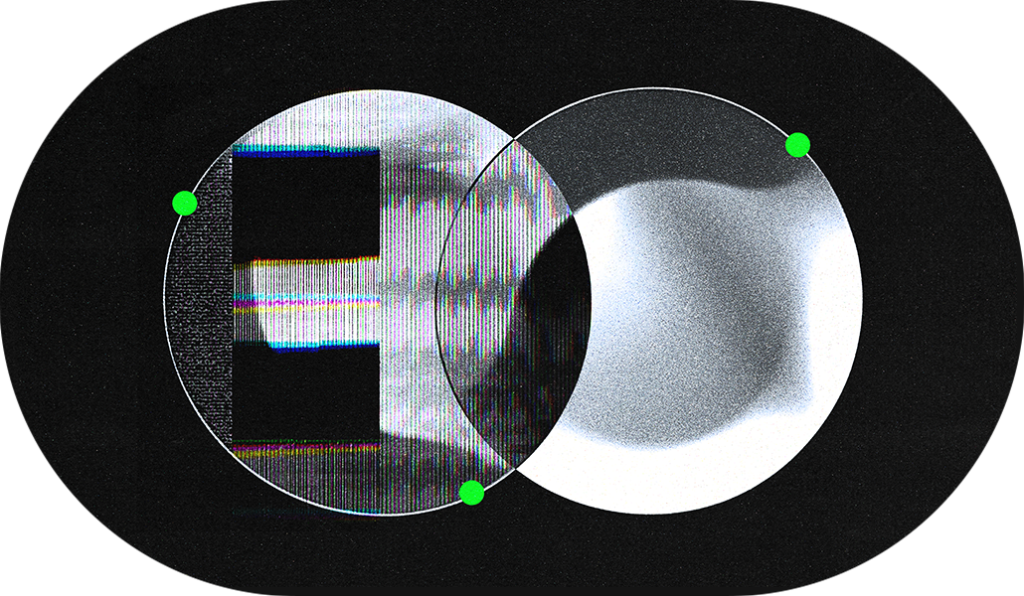
This Tactics + Insights guide, sponsored by Simpli.fi, explores how brands and agencies can successfully navigate sudden and continuous market disruptions by prioritizing omnichannel strategies.
Disruption has become a defining feature of digital advertising. Seismic regulatory shifts, like the recent antitrust ruling against Google by the Department of Justice or the ongoing legislative scrutiny of TikTok, can instantly redraw the rules of engagement and send ripples through the industry that last for years.
At the same time, cultural flashpoints and breaking news stories can erupt without warning, complicating brand safety protocols and forcing campaigns to adapt in real time. In an era when a single headline can dominate the news cycle, marketers can be left with few safe places to pivot.
And even as new technology promises solutions, it brings disruption of its own. Advances in targeting, measurement and optimization can reshape the media landscape — often faster than teams can keep up.
The most resilient brands don’t panic when the ground shifts — they’ve already built the systems to move with it. In this guide, Digiday and Simpli.fi explore how omnichannel marketers are responding to disruption with resilient strategies, adaptive technologies and full-funnel programmatic partnerships.

Some disruptions come from the top down — court rulings, regulatory changes or sudden platform policy shifts. These don’t just require tactical tweaks — they reshape the rules entirely, often without warning.
Even when policies are reversed — as was the case with Google’s cookie deprecation plans — the effects are lasting. Consumers have moved on. Companies have invested in new tools. The industry has evolved. That’s why proactive planning is the only effective defense.
“Strategy shifts are also driving diversification, and they can happen suddenly,” said Liz Maughon, Chief Customer Officer at Simpli.fi. “When Google released its AI toolset in search results, it took up a large portion of the inventory above the fold. Or when Meta prioritized Reels over feed content, it had a big impact on results. When these things happen, some advertisers will want to revisit their media strategies.”
A resilient campaign strategy starts with flexibility. Marketers who diversify media spend and audience data sources aren’t caught flat-footed when one pillar collapses. They can shift budgets, test alternatives and protect performance as conditions change.
“Overreliance is certainly risky,” said Jack Sperco, vp, client success at Simpli.fi. “A single platform creates this risk, plus it just isn’t an efficient use of marketing dollars. Diversification provides stability and the ability to shift into one platform or another quickly, in case unexpected change occurs.”
Visibility is the other half of resilience. A holistic campaign view helps teams understand how one change — whether regulatory, platform-driven or cultural — ripples across the full funnel. By centralizing media performance data, marketers can quickly identify what’s working, what’s vulnerable and where to optimize next.
“If you’re working with different vendors, then you’re getting different reports, different results and not really seeing how they all work together,” said Sperco. “Keeping programmatic, search and social all under one roof is key. You get unified reporting, fast campaign adjustments and a partner who can shift your dollars immediately if something changes.”
Not all disruption is policy-based. Cultural flashpoints can spark backlash or reputational risk overnight. One misplaced ad can undermine years of brand building — and alienate consumers in the process.
To stay ahead, advertisers are investing in real-time brand safety tools. Automation now plays a key role, with AI-powered systems analyzing content environments at the page level — filtering for sentiment, tone and visual context. This enables dynamic blocking and allows content that’s safe and aligned to stay active.

“When a scandal or controversy takes hold of the social platforms, speed is critical,” said Sperco. “Working with multiple vendors slows the process down. Centralizing with a single programmatic partner enables advertisers to pause portions of the campaign immediately and shift those dollars elsewhere.”
Contextual intelligence, however, isn’t just defensive — it can also be directional. Today’s most strategic marketers use the same brand safety technology to interpret the full environment and align campaigns with content that reflects brand values and resonates with target audiences.
“The best programmatic partners provide very granular and detailed data to guide decisions on what to change, what to add and what to stop,” said Maughon. “You might discover a new type of audience you didn’t expect to convert, or find that a product you assumed would drive the most business is actually being outperformed by something else. We’ve even seen advertisers unlock top-performing keywords by tracking conversion patterns on related terms. And these insights can help inform your entire campaign.”
Many pilots will say that airplanes are off course 90% of the time. Constant adjustments made by the autopilot and trained aviators get them safely to their destination. Digital advertising campaigns work the same way. Changes in performance, behavior and channel dynamics require quick, intelligent corrections.
Automation provides this kind of precision at scale. AI monitors performance signals across campaigns to adjust budgets, creatives and audiences automatically. These micro-updates happen faster than any human team could react — keeping campaigns aligned even as the media landscape shifts.
“Automation allows us to react faster than any human could — but we still work closely with the brand to define the right targeting parameters,” said Sperco. “Success isn’t about how much is spent — it’s about how efficiently and effectively the budget is used.”
Human involvement remains essential. Experienced teams interpret context, assess trade-offs and refine strategies in ways machines can’t. The most effective campaigns rely on a human-plus-machine approach: automation for speed and scale, humans for discernment and nuance.
“You still need the human layer — for judgment, coordination and course correction across a complex media mix,” said Maughon. “Having a core group of experts working together to strategize where dollars should move is essential to optimization.”
That balance is especially critical in omnichannel environments, where a change in one channel can trigger ripple effects across others. Without a connected view, those impacts can go unnoticed — or worse, set off a chain of events, where solving one problem creates another.
By unifying measurement and decision-making across channels, marketers can resolve small issues before they become larger performance gaps.
“A holistic approach brings everything into focus — so you’re not just adjusting one lever, you’re orchestrating a whole system,” said Sperco.
Years of preparation for a cookieless future have yielded real progress. Identity graphs, contextual engines, clean rooms and other alternatives have matured — and new solutions will keep emerging just as quickly.
Most marketing teams can’t afford to overhaul tools or retrain staff each time the landscape shifts. Instead of rebuilding with every new solution, digital marketing teams need targeting foundations that adapt, not collapse, under pressure.
“The industry shouldn’t be preparing for one future because it’s important to build a foundation that can flex for any scenario,” said Sperco. “When display, CTV and social teams are in sync, they can make budget and targeting adjustments that respond to all kinds of change. That kind of coordination is what keeps campaigns resilient.”

Yet building a solution that is adaptable and scalable is a tall order for many advertisers. Omnichannel campaigns already span screens, formats and audience segments. Adding privacy layers and evolving tech standards into that mix can overwhelm even experienced teams.
Many remain dependent on single identifiers like third-party cookies or hashed emails. Others take a patchwork approach, layering new tools onto aging stacks without ensuring interoperability. The result: siloed data, inconsistent measurement and disconnected insights.
Some quick fixes — like adopting publisher-provided IDs or leaning on contextual targeting — provide momentary relief but rarely scale across channels or adapt to future shifts.
Programmatic partners absorb much of the operational complexity behind the scenes by integrating new tech and maintaining compliance. They also streamline execution with modular solutions and cross-channel visibility through a single dashboard.
In a landscape defined by disruption, the value of a full-funnel programmatic partner goes beyond execution. The right partner acts as an extension of the team — offering strategy, transparency and adaptability from planning through optimization.
“Transparency is super important — in pricing, in reporting, in where your dollars are going,” Sperco said. “You’re trusting your budget to a partner, so you should expect open communication and fast response when things need to change.”
Advertisers should expect full visibility into fees, inventory, measurement and performance — and proactive service to match. The most effective partners communicate frequently, flag issues early and evolve alongside the client’s needs.
Equally important is strategic alignment. A strong partner understands how campaign components connect, avoids one-size-fits-all thinking and brings a system-wide view to every recommendation.
“Everything in a campaign has to be looked at as a whole, not just how one tactic performs,” Sperco said. “A strong partner understands how each piece supports the next — and how to coordinate adjustments when conditions shift.”
Finally, brands and agencies should consider whether a partner’s capabilities and values align with their growth path. The best relationships are built for the long term, designed to adapt as goals, strategies and technologies evolve.
“You want a partner that evolves with your business,” said Maughon. “Your audience is going to change, your goals will shift — and the right partner listens to the data and adapts with you.”
Disruption isn’t going away — it’s accelerating. But with a flexible foundation, unified measurement and the right programmatic partners, brands can turn uncertainty into opportunity.
By investing in signal-agnostic targeting, automating optimization and aligning safety with strategy, advertisers can stay ahead — no matter how the market shifts.
The future belongs to marketers who plan for change, move with agility and connect every tactic to a broader vision.

About Simpli.fi
Simpli.fi is the leading Advertising Success Platform, providing programmatic advertising solutions and workflow software to over 2,000 media teams, agencies and brands. Simpli.fi empowers advertisers to maximize relevance in what they do, in the connections made, and in the results delivered across CTV, mobile, display and other media types. Our platform delivers performance on budgets of all sizes, executing over 140,000 campaigns for 40,000 advertisers in a typical month. Simpli.fi’s investors include leading private equity firms Blackstone and GTCR. To learn more about Simpli.fi, please visit Simpli.fi.
















